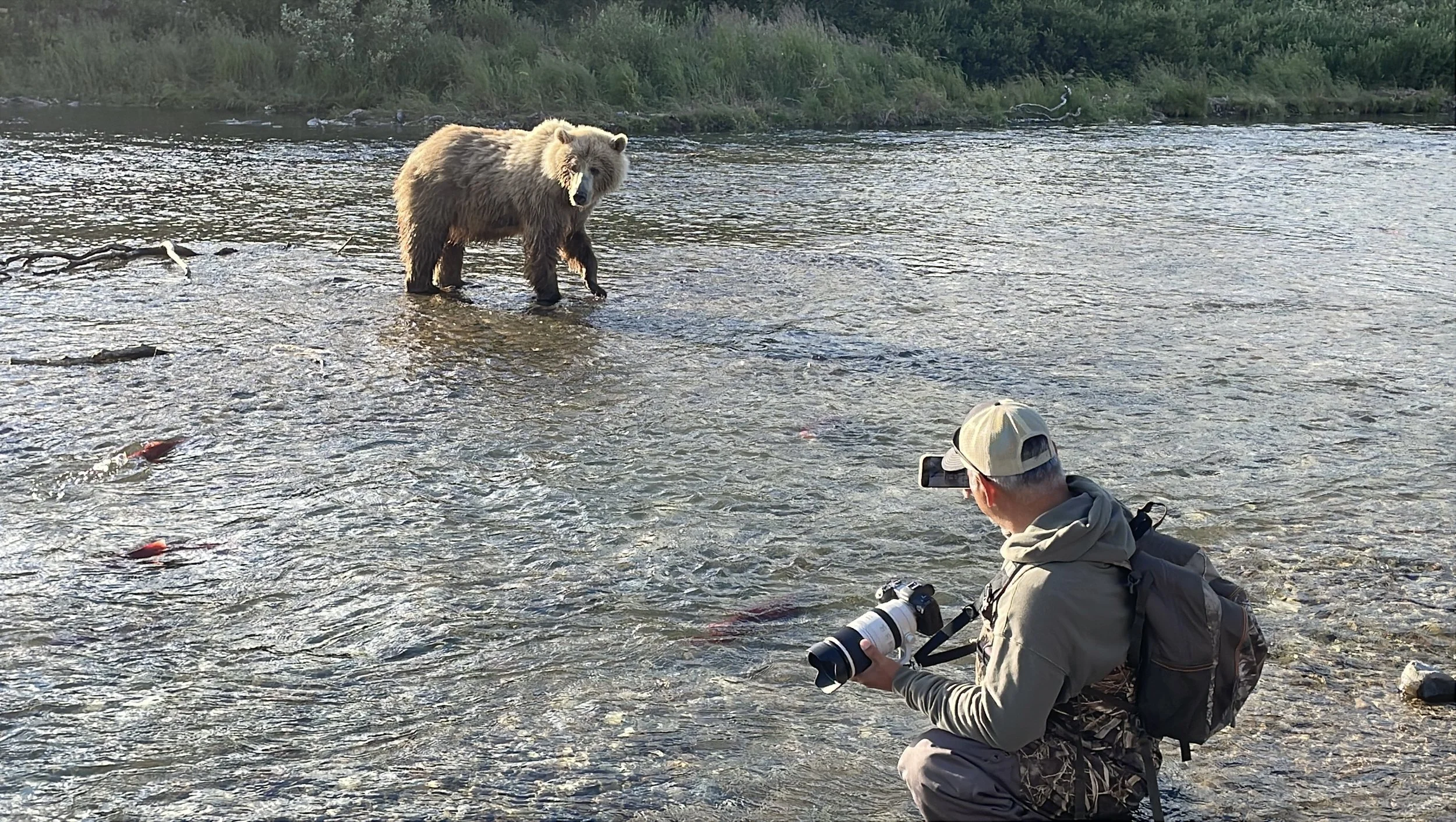People often imagine that swimming with tiger sharks is a heart-pounding, adrenaline-fueled rush, like stepping into a scene from a thriller movie.
But the truth? It’s not about chasing danger or proving bravery, it’s about respect, awareness, and understanding the rules of sharing water with a true apex predator.
If you understand the rules, they are very safe to swim with.
When you're in the water with a big predator like a tiger shark, respect, and awareness, are everything.
Tiger sharks are ambush predators by nature. Curious, confident, and sometimes mischivious, and they always deserve your full attention.
That’s why two golden rules apply:
1. Never Take Your Eyes Off Them
They know when you’re not looking. If you lose focus, they may test you by sneaking up behind you. Your job is to keep calm, stay alert, and they’ll typically swim away once they know you’re watching.
2. Always Maintain a Safety Bubble
A tiger shark should never be allowed to bump into you. That curious nudge can quickly go bad, what starts as exploratory bump can turn into a bite if boundaries aren’t set.
Use your presence, awareness, and, if needed, a gentle redirection to maintain that safe space.
If a shark does get too close, here’s where technique comes in:
How to Safely Push a Tiger Shark Away
If necessary, you never push a tiger shark by grabbing it’s nose or the underside of the head.
Instead, lay your palm flat on top of its head and gently guide it away.
Why should you not grab their face?
Because under their snouts are highly sensitive pores called the Ampullae of Lorenzini, tiny receptors that detect electrical signals.
Touching that area can overstimulate them, causing a shark to reflexively open its mouth wide.
And if you don’t know what you’re doing, things can go wrong fast.
It’s the small details like this that separate a safe, awe-inspiring encounter from a risky one.
Diving with big sharks like tiger sharks isn’t about being fearless, it’s about respecting the animals, and understanding their behavior.
After 20+ years of diving with tiger sharks, I can tell you this:
If you follow these guideline, you’ll walk away with one of the most humbling, beautiful and unforgettable experiences of your life.
There’s a high you get that comes from swimming with tiger sharks that’s hard to put into words.
It’s not the kind of high that comes from adrenaline, it’s deeper than that. It’s the magic you feel when a 12-foot predator swims past you, just feet away, looking at you when it passes.
It’s the raw, almost spiritual feeling of being accepted, even if just for a moment, into their world.
You don’t forget those encounters. They leave you buzzing for days. They humble you, reshape you.
Leaving you changed forever.
💡 Want to Experience This for Yourself?
Join us on one of our upcoming expeditions to Tiger Beach and Bimini for safe, unforgettable encounters with tiger sharks and great hammerheads.
👉 View Trip Details & Availability Here
Thank you for reading our Blog.
*New Blogs posted 3–4 times a week. (sometimes more.)
Follow along for fresh stories, trip updates, and raw moments from the wild.










